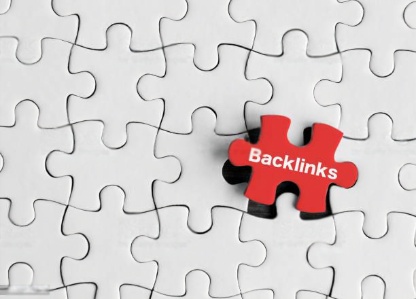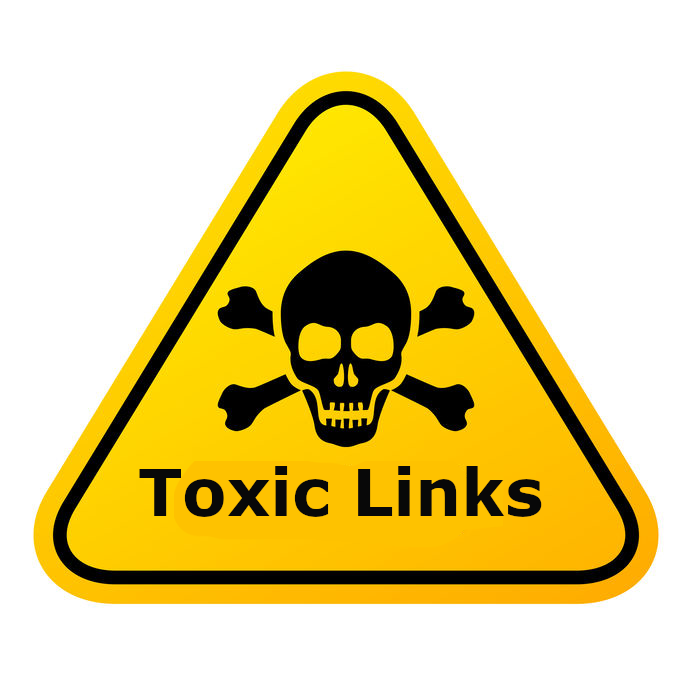Small and large businesses go all out to have their website get ranked organically on the top of the first search engine result page. The organic rankings on search engines are determined by taking into account different SEO metrics and characteristics.
There are more than 200 ranking factors on the popular search engine Google. However, Google has never publicized its list in a specific order but according to studies and various announcements, backlinks are the top 3rd ranking factor following content quality [1st] and RankBrain [2nd].
What are backlinks?
Backlinks are inbound links that are directed to your webpage from another website. To Google, backlinks are regarded as a gauge of your website’s popularity among users. Different webpages on the web are interconnected via links. Links are like adhesives that hold the web together.
SEO experts create internal links to connect web pages on the same domain and are designed to help users navigate your website with ease. External links connect to other websites and are designed to offer extra value to readers. An outgoing link is an invaluable asset. It shows the link has directions. When an outbound link on the other website is directed to your target page, it is a backlink. Search engine bots interpret the backlink as fully intentional and assume there is a good editorial assessment on the target webpage. So, they propel your webpage high in SERPs.
Earning backlinks has an optimistic effect on your site’s search visibility or ranking. Link building or link earning is a part of off-page SEO. Some backlinks are intrinsically more valuable than the ones generated from high-authority, trustworthy, and popular domains.
On the other hand, backlinks from potentially spammy, low-authority websites are based on the opposing end of the spectrum. The authority site owner instructs specifically search engines to ‘Dofollow’ or ‘Nofollow’ the link. It means whether to pass the link equity or not. Remember, you cannot undermine the value or importance of Nofollow links, as they make the link profile of your pages look natural. For example, Nofollow links pointing to high Domain Authority blogs from your posts can offer your brand a good boost!
Earned backlinks are important but the links you create to other websites also fluctuate in value. While linking to an external site, the choices made regarding the webpage from which you link, choose dofollow/nofollow, anchor text used and linking page Meta tags can have a significant impact on value. So, you need to perform backlink analysis regularly and keep your backlink profile healthy.
What is backlink analysis and why is it important?
Backlink analysis helps to evaluate the quality and quantity of links directed to your web pages from other domains. Google uses backlinks to gauge your website’s authority for ranking on search results. So, backlink analysis offers better knowledge about the ability of your website to rank on SERPs.
You can detect bad backlinks. These are unnatural links resulting from spammy sites, which can damage your website ranking on Google. Nevertheless, finding and removing them can keep the reputation of your website intact.
Earning a backlink is time-consuming. New website owners or those trying to expand their keyword footprint are overwhelmed as they don’t know where or how to start their link-building campaign. Competitive backlink analysis of your competitor’s already ranking top for target keywords offers in-depth knowledge of what helped in their link-building campaign. You can use the backlink analysis tool to identify these links and target those websites.
Regular backlink analysis of your main competitors is also crucial. It allows you to get an idea of your vulnerabilities to outrank them. You even get to know some missing link opportunities and ideas to fortify your link-building strategy.
Backlink analysis offers lots of data, which can be used in multiple ways. However, it can make you feel overpowered, so here are a few main metrics to monitor for analysis.
- Total link numbers and unique domains
- Referring domains
- Top webpages on your site with lots of backlinks
Compare these metrics with competitor’s pages to gain valuable insight into site authority, link-building opportunities, and content types to write. A competitor’s page can be used as inspiration for writing content but from a different angle. While creating a link-building strategy you also need to be fully certain of which backlinks to pursue and which to remove or avoid.
What are the good links?
Good backlinks are relevant outbound links directed to an authoritative and trusted domain. Google perceives backlinks as a way to verify that your website offers helpful and quality content to users. Quality links coming from reliable sources are not anticipated for influencing search engine ranking.
According to Google, ‘Links are editorial votes offered by choice. The more helpful a post you have the higher the chances of getting found and shared. The best way of getting other sites to create relevant and high-quality links to your website is to write engaging, relevant content that organically gains popularity among internet users.’
When a link is placed editorially, it is the webmaster or editor that does it. They don’t need to link but did it because of the valuable content you created and want to share it with their website followers. Good links can drive referral traffic from trusted sources in your niche.
Backlinks serve as an SEO metric, which enhances the reader’s experience. A good link directs to relevant content, which offers extra information. If the links direct readers to a totally unrelated website, then backlinks don’t add value. Relevant backlinks including specific anchor text are too valuable. Anchor text offers the user a preview of the topic this link accompanies if they decide to click. Search engine use keywords from anchor text to identify what the page is about.
A few types of good links are from –
- Editorial sites [blogger, publisher, or journalist]
- Relation-based backlinks
- Guest blogging or posting
- Niche directories
If someone tells you that all backlinks are great for enhancing search engine ranking then it is not true. There are some bad or toxic backlinks you must avoid or Google will devalue your website.
What are the toxic links?
According to Google, ‘A link aimed to manipulate PageRank in SERPs is considered as link scheming and violation of Google’s protocols.’ So, any activity that influences external links or backlinks falls under the toxic link category.
In Simple words, links that are not placed editorially, or if they are forced into irrelevant content, are assumed to be bad or toxic in quality. Toxic links are usually coming from blog comments, forms links, Chinese / Japanese language websites, sites with high spam scores, etc.
It’s true as mentioned in Google guidelines but it’s not possible for small size businesses to gain links naturally. One cannot simply create a website and wait for people to talk about it and link to it. Everyone is not loaded with funds like Amazon or Apple. Here Is why SEO agencies exist, as they can help in getting quality links with relevant content on trusted blogs and sites.
Effects of Toxic backlinks
In the past, using links manipulatively was common, which dramatically affected website ranking [in a good way]. However, as Google evolved and is focused on offering the best user experience it has changed its algorithms.
Google’s Penguin algorithm was the one that bashed the link-building setting for the better. Unnatural links were targeted in 2012 and even today, Google’s webspam team conducts link profile reviews manually to identify excessive spamming.
The spam score metric is also developed by Moz in their Link Explorer tool. It allows the users to know if the pages have high, low, or medium spam scores. Web pages with high spam scores are more likely to be penalized by Google.
-
Unnatural links get a manual action
Manual reviews happen when a spam report is filed, being in a niche popular for disproportionate link spamming and issues identified algorithmically. A notification of manual actions is sent to the website owner along with the affected pages’ detail.
The pages will lose rankings on SERPs and will be prevented from retrieving the previous ranking until the penalty is lifted. To eliminate manual action, you will need to eliminate the toxic links that triggered the penalty.
-
Unnatural links are algorithmically penalized
Penguin filters detect unnatural links automatically and make adjustments in ranking without sending a notification. You cannot request the removal of the algorithmic penalty. You will know the negative impact when your website visibility and organic traffic decline.
To regain your ranking from an algorithmic penalty, you need to avoid using tactics that triggered the problem and disavow the suspected toxic links. You will need to take steps in earning quality backlinks to recover completely.
-
Unnatural links are disregarded
Google disregards useless links because for Google it is a waste of resources and time. If the links are not extensively spammed, it will not impact your organic traffic as search bots will ignore them. Nevertheless, getting bad links without approval can avoid penalties but is a bad link-building practice.
How to find toxic links?
A manual action penalty can never be missed because the entire website will experience a sudden decline in search ranking or totally vanish from search results. You will even receive a manual action notification associated with the affected web pages.
With the Penguin penalty, your organic traffic will drop for some keywords but this can even impact your website significantly. The recovery process is lengthy and challenging in both cases.
You need to use backlink monitoring tools to avoid toxic backlinks and Google penalties. Using backlink monitoring tools helps to identify the links that fit the toxic link definition. There are many apps but each uses different metrics.
Check for inconsistencies and big drops and spikes in referring domain reports. You can check the link’s origin. For example, if you find that plenty of links are from countries you are not connected with then there is something wrong.
Start analyzing backlinks a with Domain Rating of less than 30 and be in groups. Links originating from the same content domain can also badly impact your website.
How to remove toxic links?
Bad backlink removal is a taxing process, especially when you have piles of bad links. Some sites charge removal fees, while a few that ignore or deny your removal request.
Steps to remove toxic backlinks
- Identify toxic backlinks to eliminate.
- Contact the webmaster or the website owner. Check the contact info to get in touch with the person who operates the site.
- Send an email with detailed data about the link for removal.
- Wait patiently for a maximum of 10 days before sending another email.
- If payment is asked or email is ignored then create a list of links to disavow and submit to Google Search Console.
- You can even remove webpages from links. The webpages that are connected to toxic links that have low quality can be deleted using a 404 error code.
How to disavow toxic links?
Google Disavow file is the last resort. When you have hundreds of spammy links then taking them down using a gentle request is impossible. You may have forgotten the passwords of the sites you created a link or the sites are inactive.
Steps to disavow toxic links
- After a thorough analysis of the backlink profile, use disavows links tool to create a file including the URLs of the links you feel are harming your website’s organic ranking.
- Ensure that the Disavow file already contains previously disavowed links before you add the new ones.
- Before you export for disavow click the delete button. It is recommended to disavow at the domain level instead of the URL because it avoids issues in the future.
- After completing the disavow list, you need to export it to Google’s Search Console. It will take a minimum of 6 weeks before your file is processed.
- Be patient as it takes some time for file processing and regains your ranking on SERPs.
Regularly run backlink audits to identify toxic links and handle them before they become a headache.
Should we make more links or stop?
Backlinks are essential for SEO and without them ranking for a profitable keyword is hard. However, quality always surpasses quantity! Therefore, avoid paid links, but concentrate on creating great content that will establish your brand as an authoritative or the go-to platform for finding a solution.
Guest posting, outreach, and offering high-quality posts help to collect more backlinks. In case, you maxed on guest posts then there is an array of less popular link-building strategies you can check for inspiration.
The numbers of backlinks need to be based on the number of your competitors racing for the same rank with the same keywords. The response to the above question is… there is no genuine answer. You need to perform backlink audits regularly, eliminate junk links and regularly post high-quality content for internet users to engage and enjoy.





